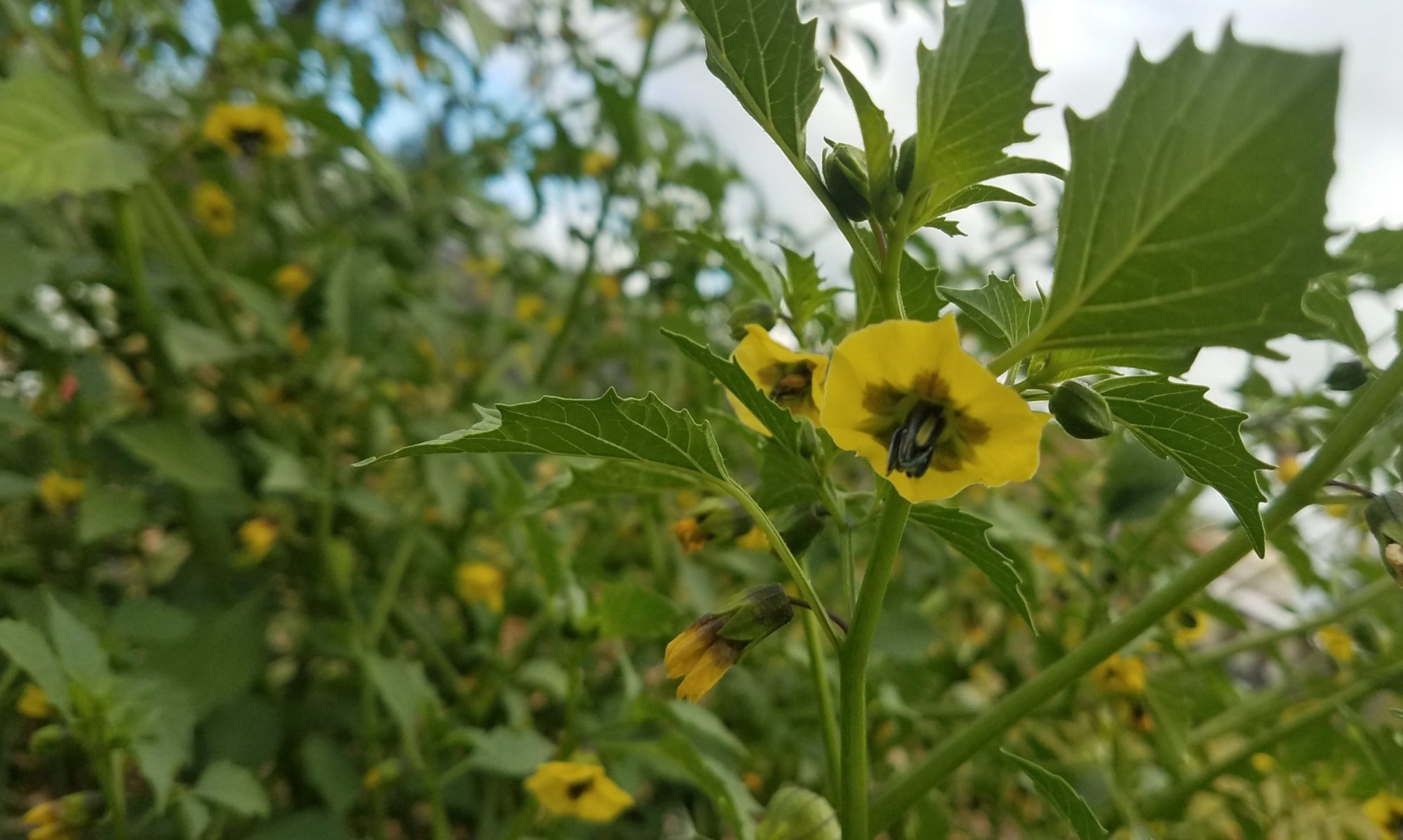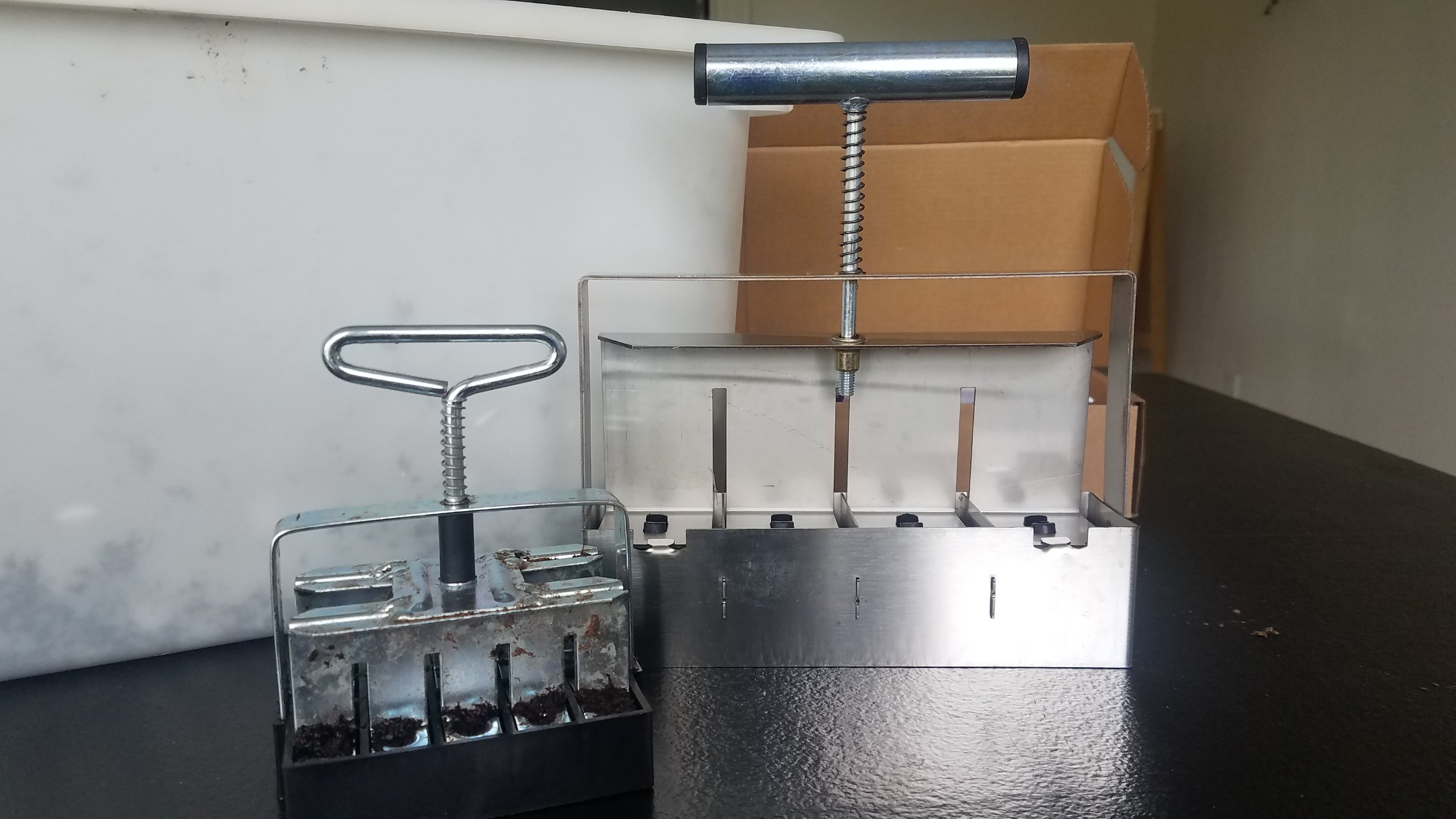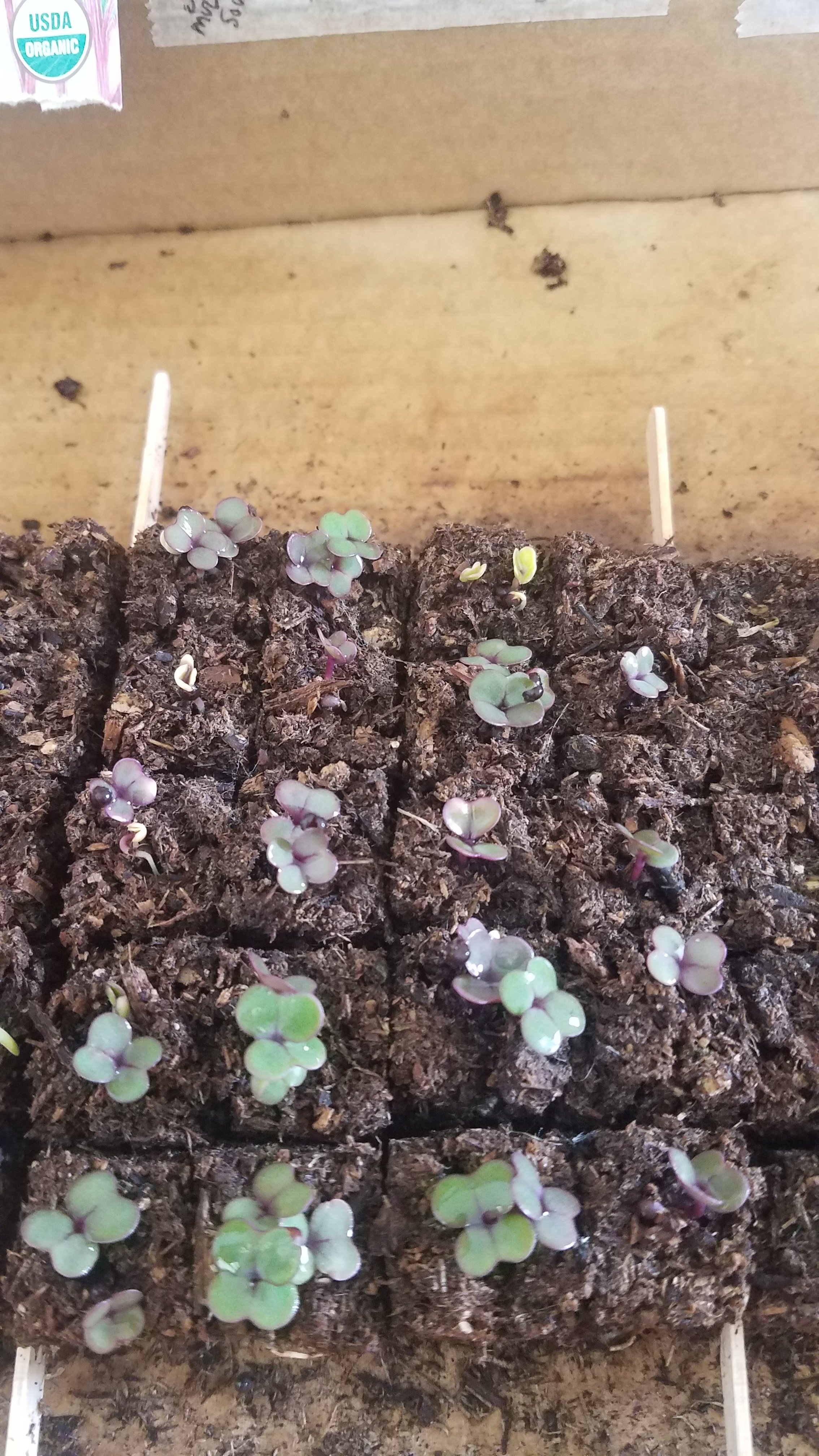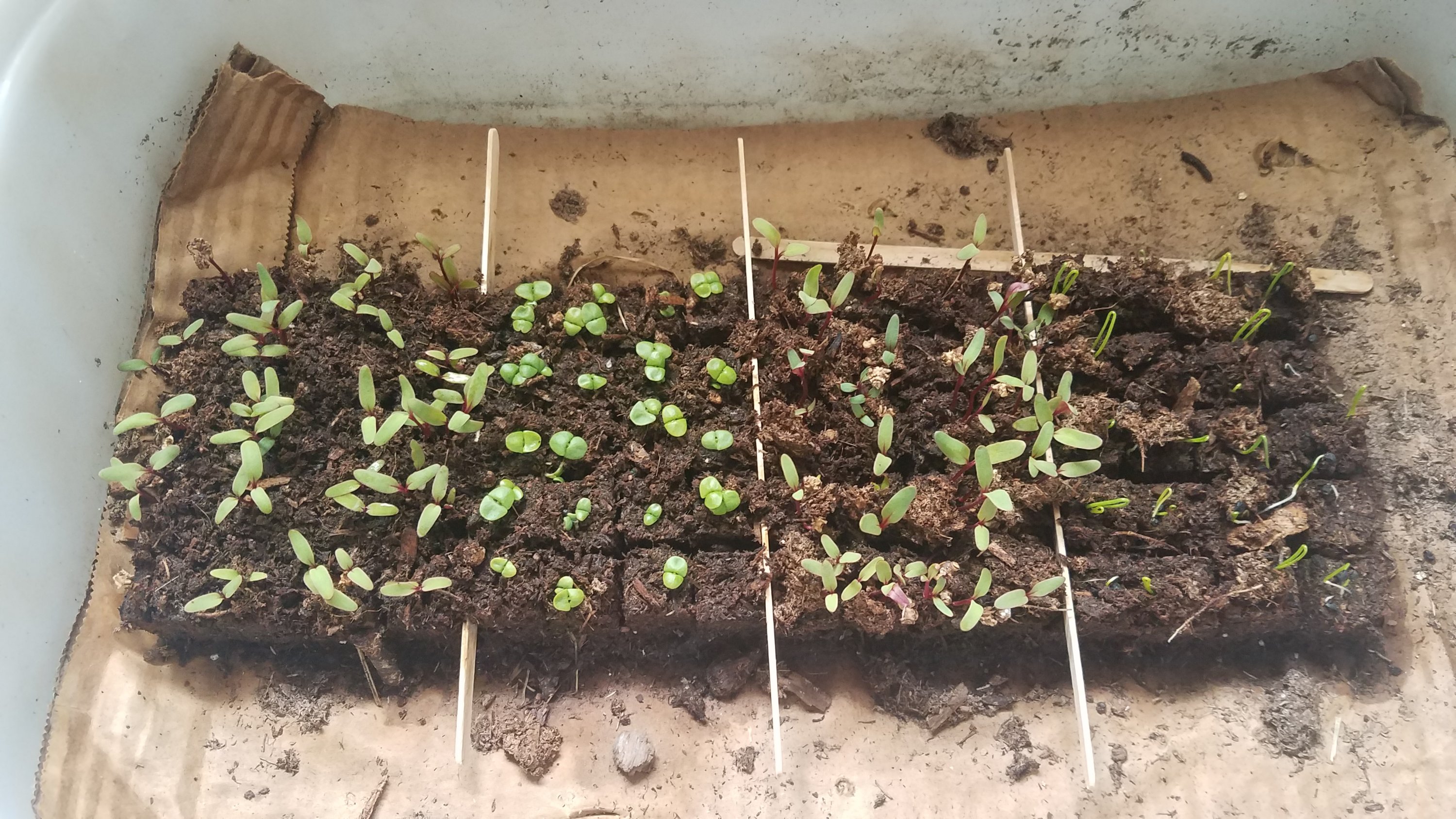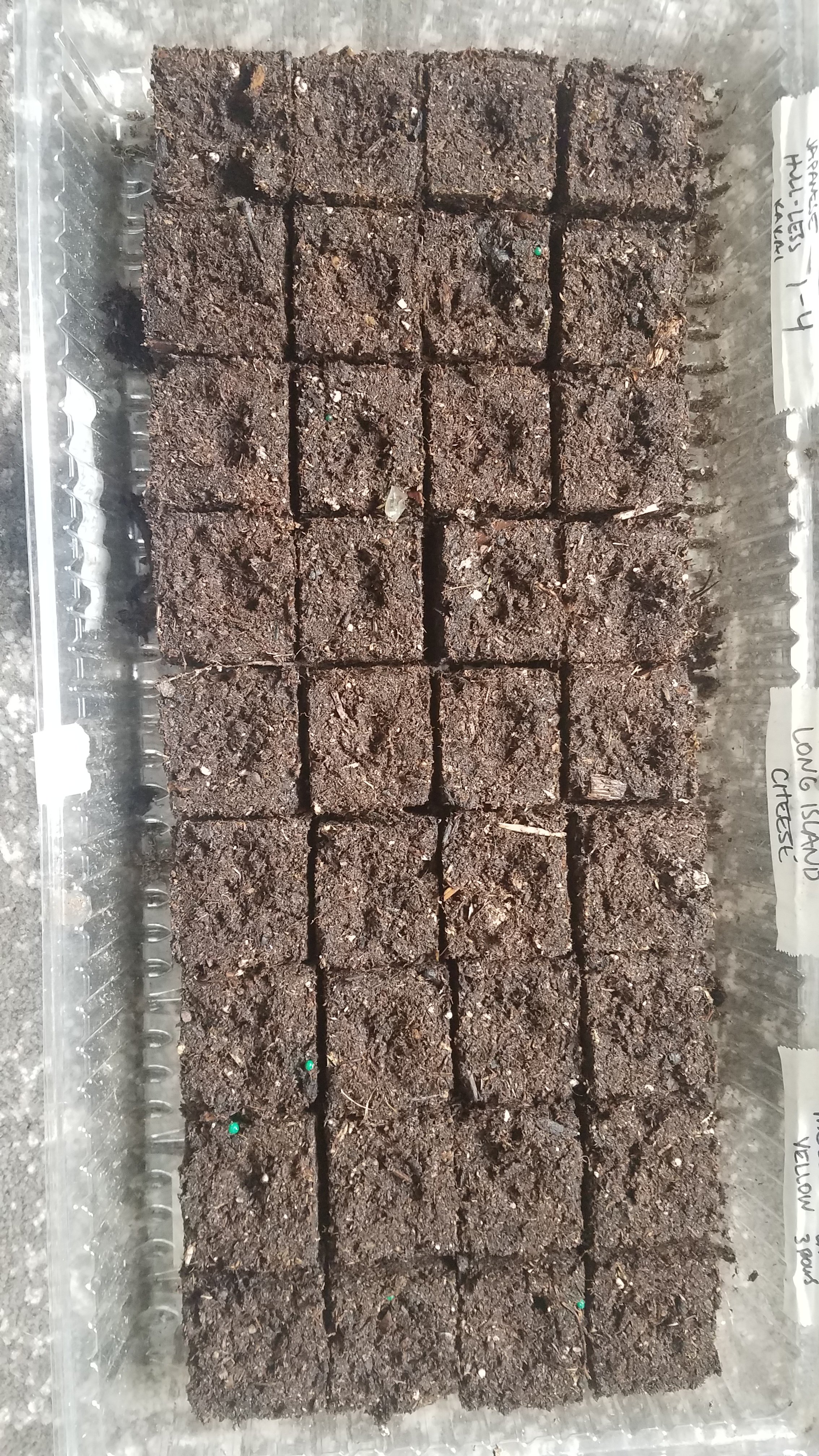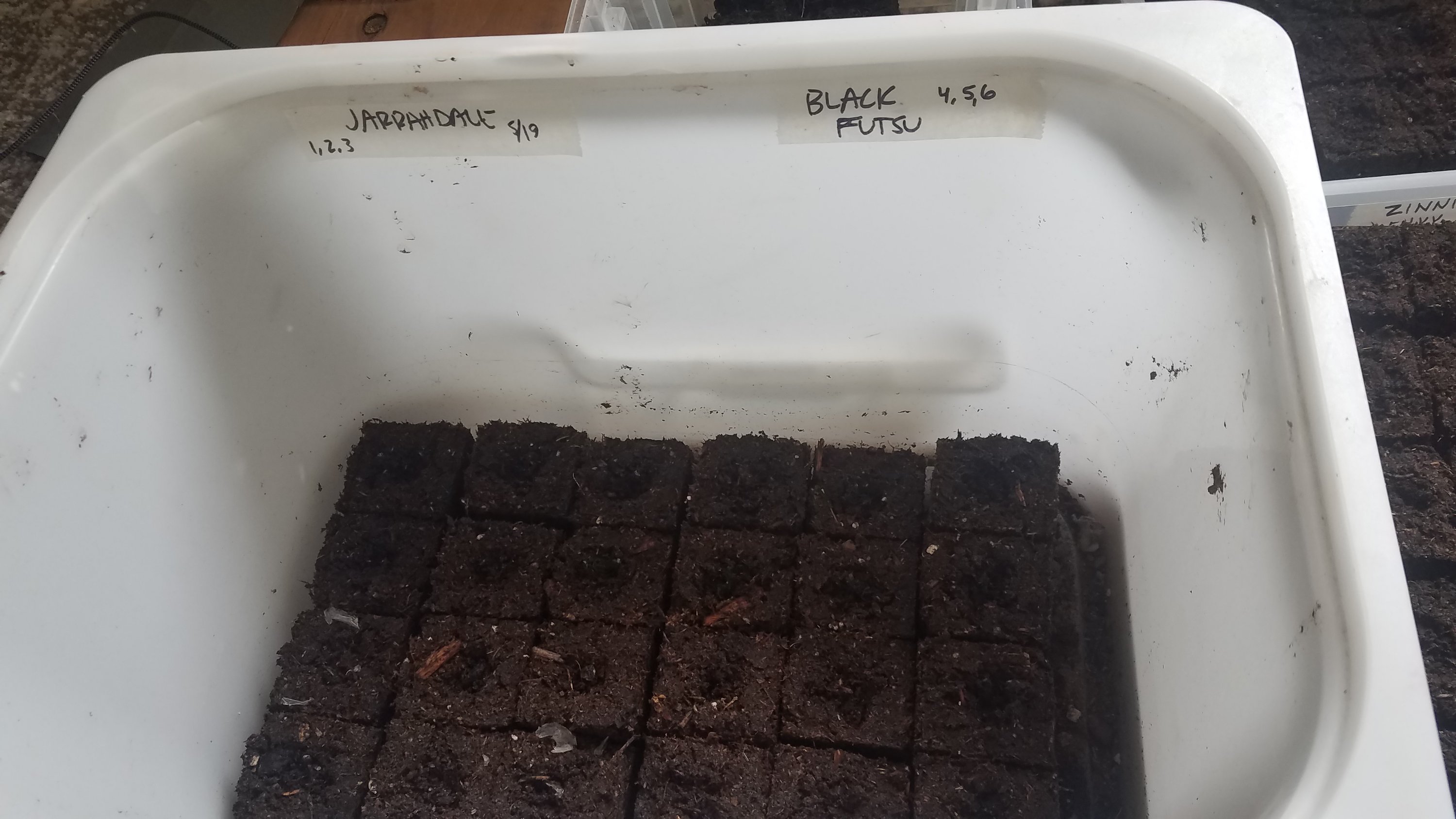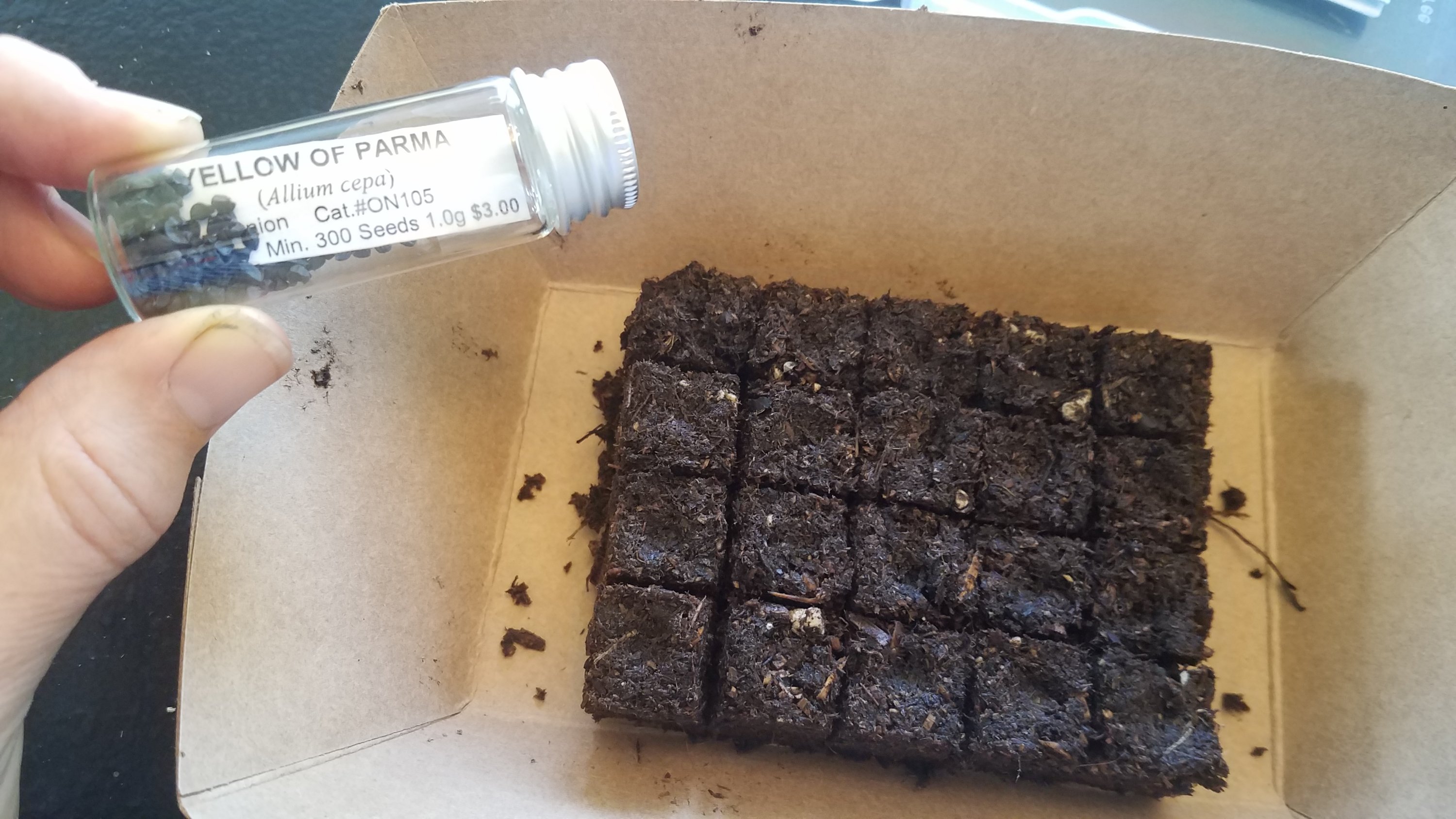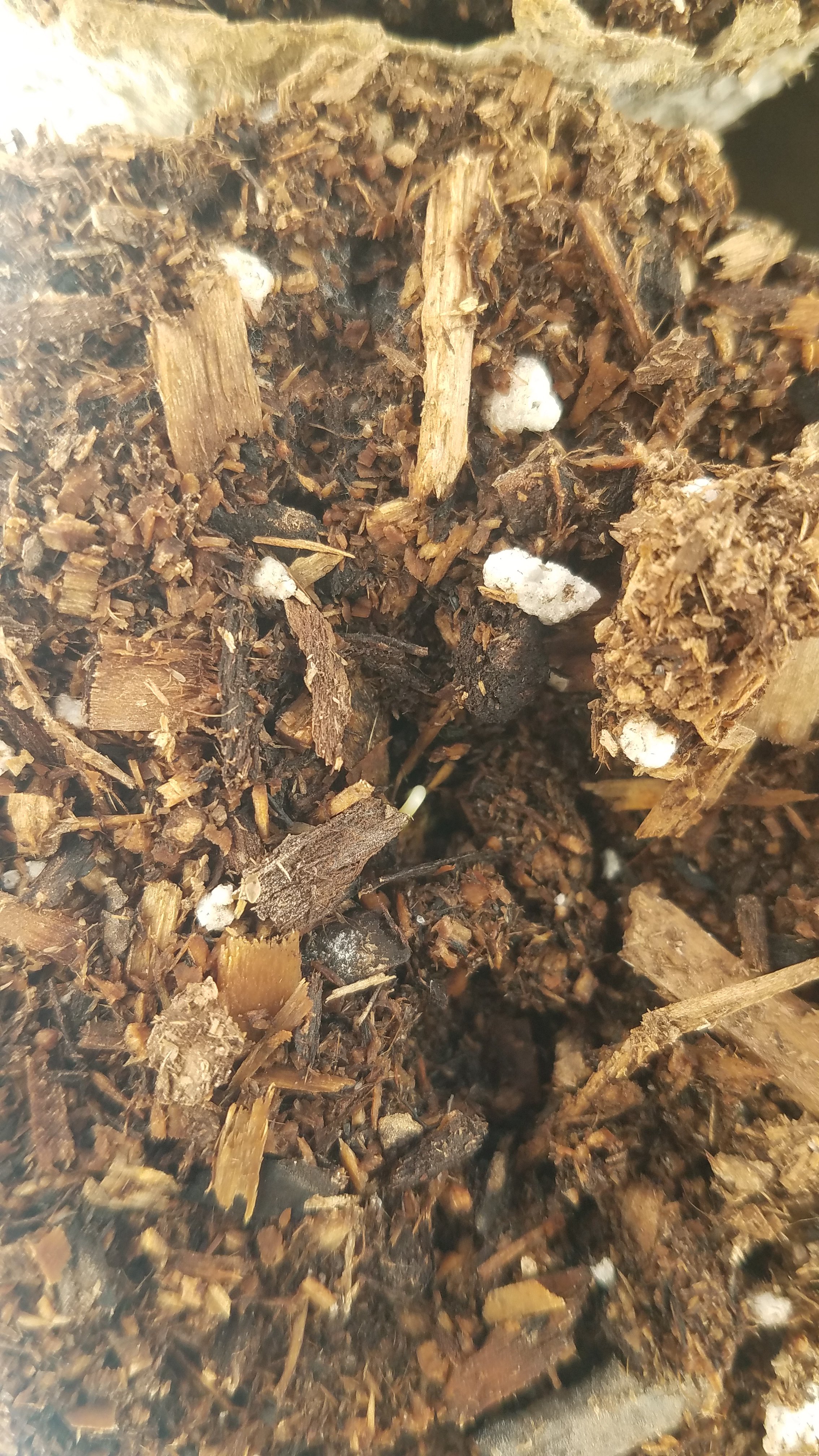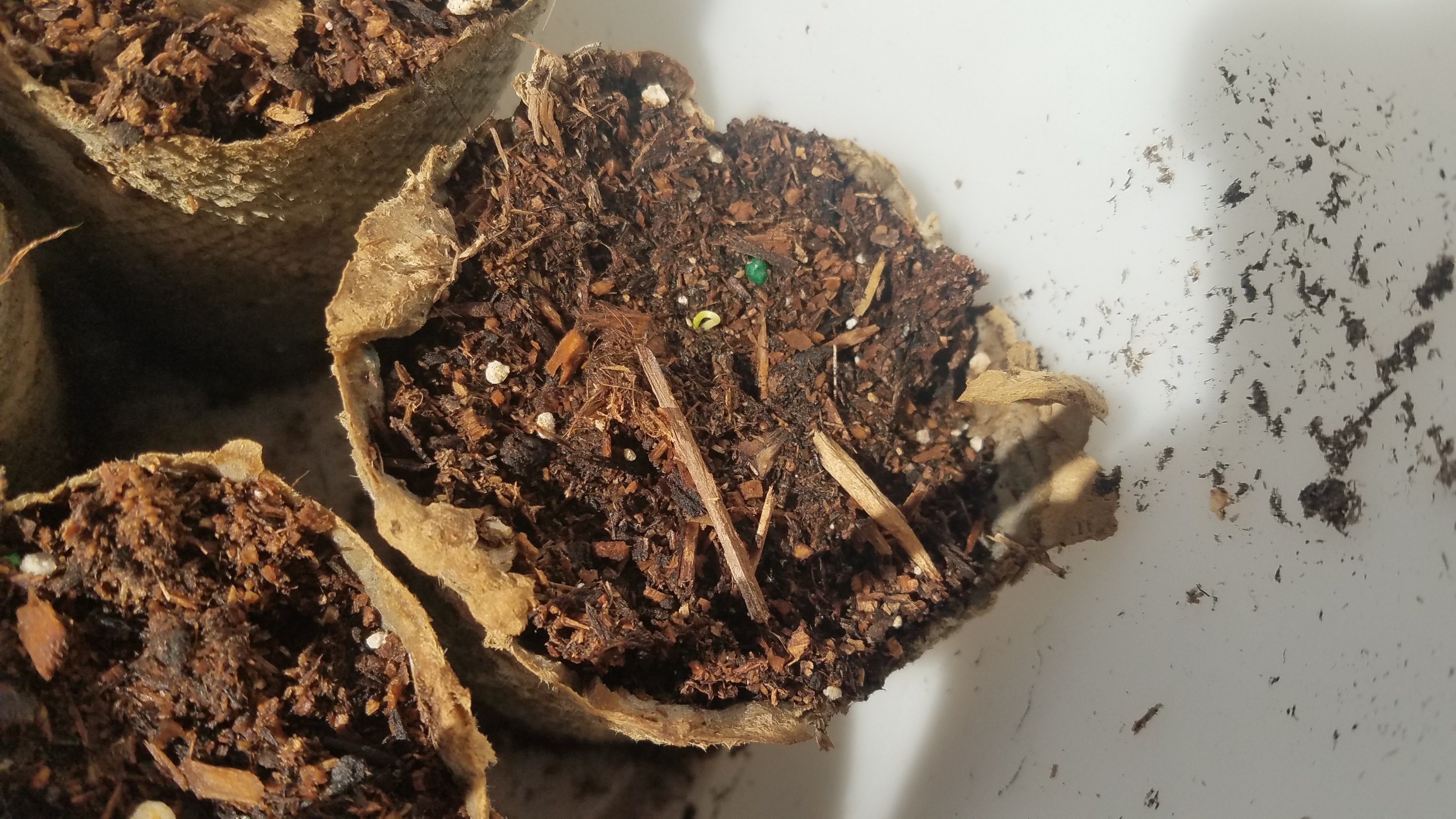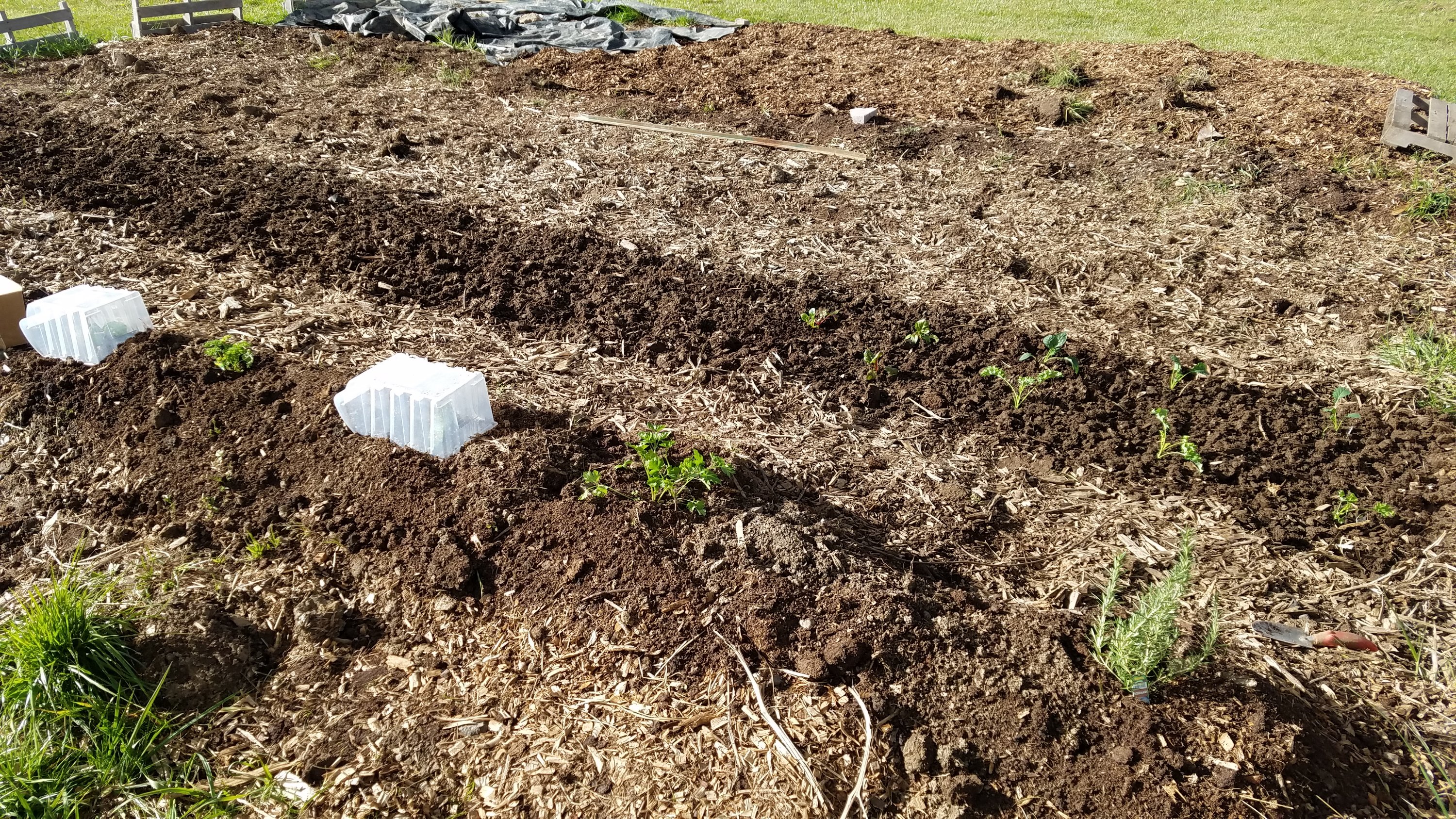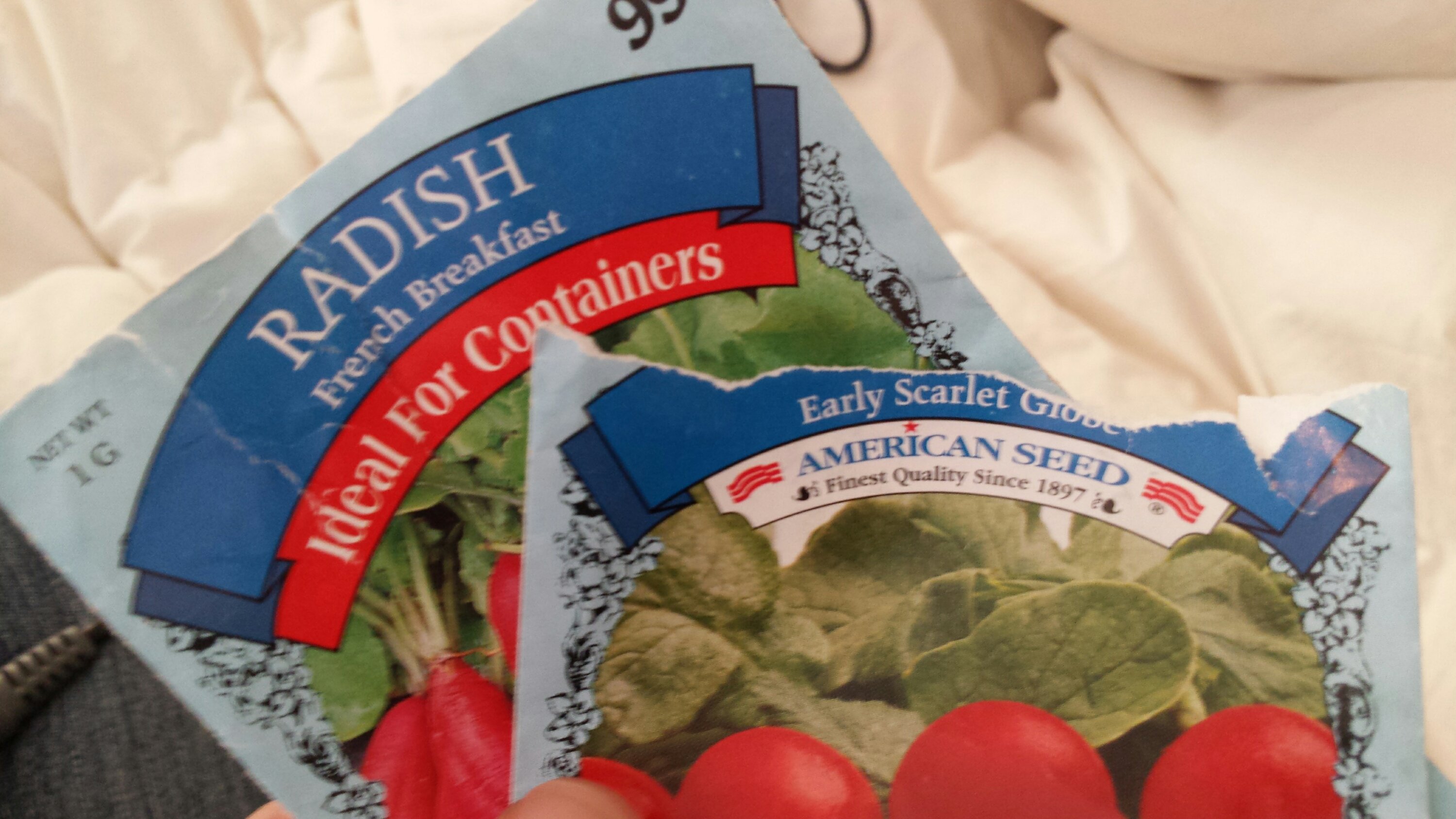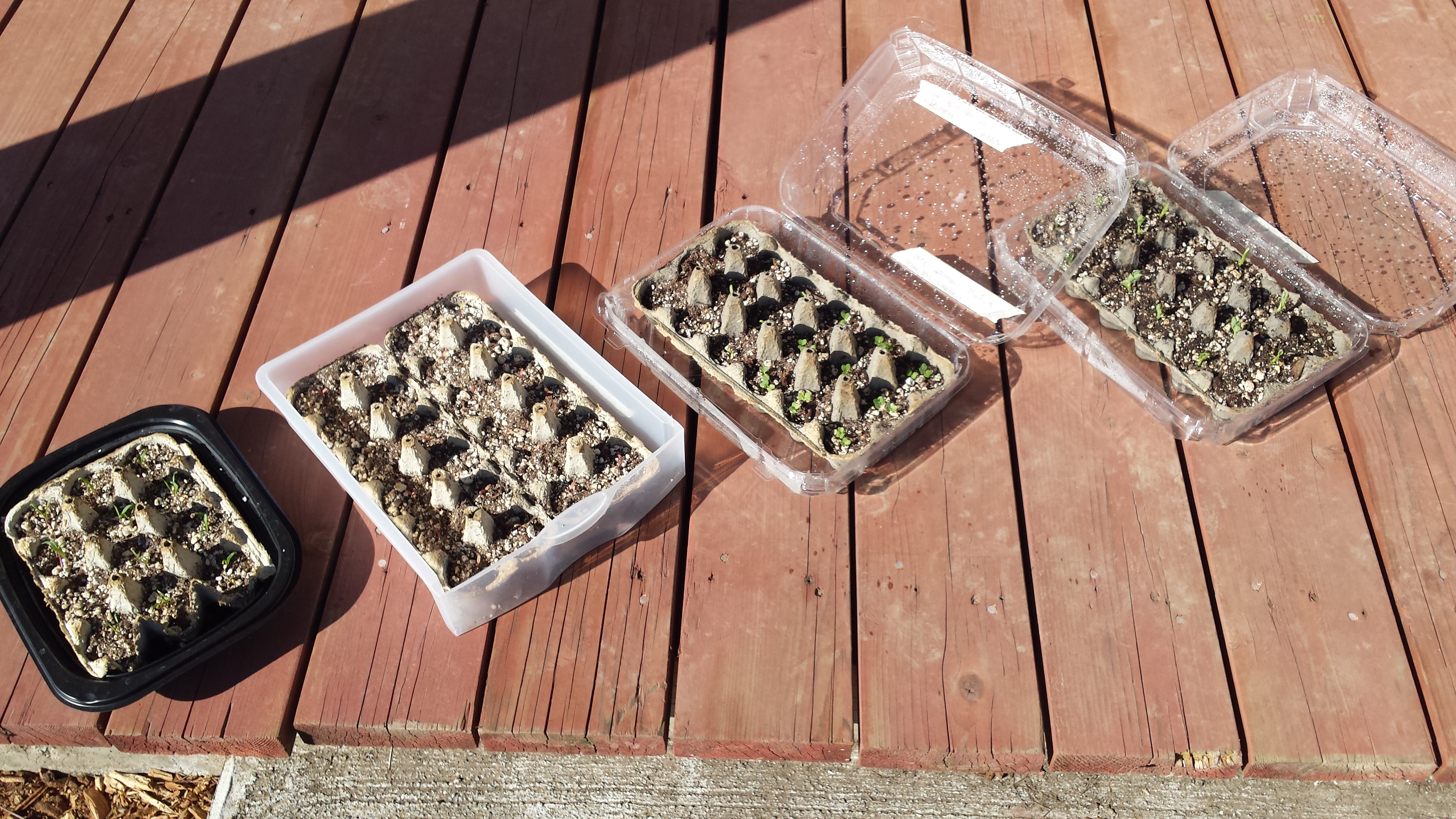The corn that Hercules trampled or ate is gone, and that’s disappointing. Three weeks of growth–gone. Time is so valuable in late spring. Everything is getting started, and so many things are time sensitive. If we don’t get the corn going now, we can’t just replant it in late July. There won’t be enough time for the corn to mature before the first frost comes.
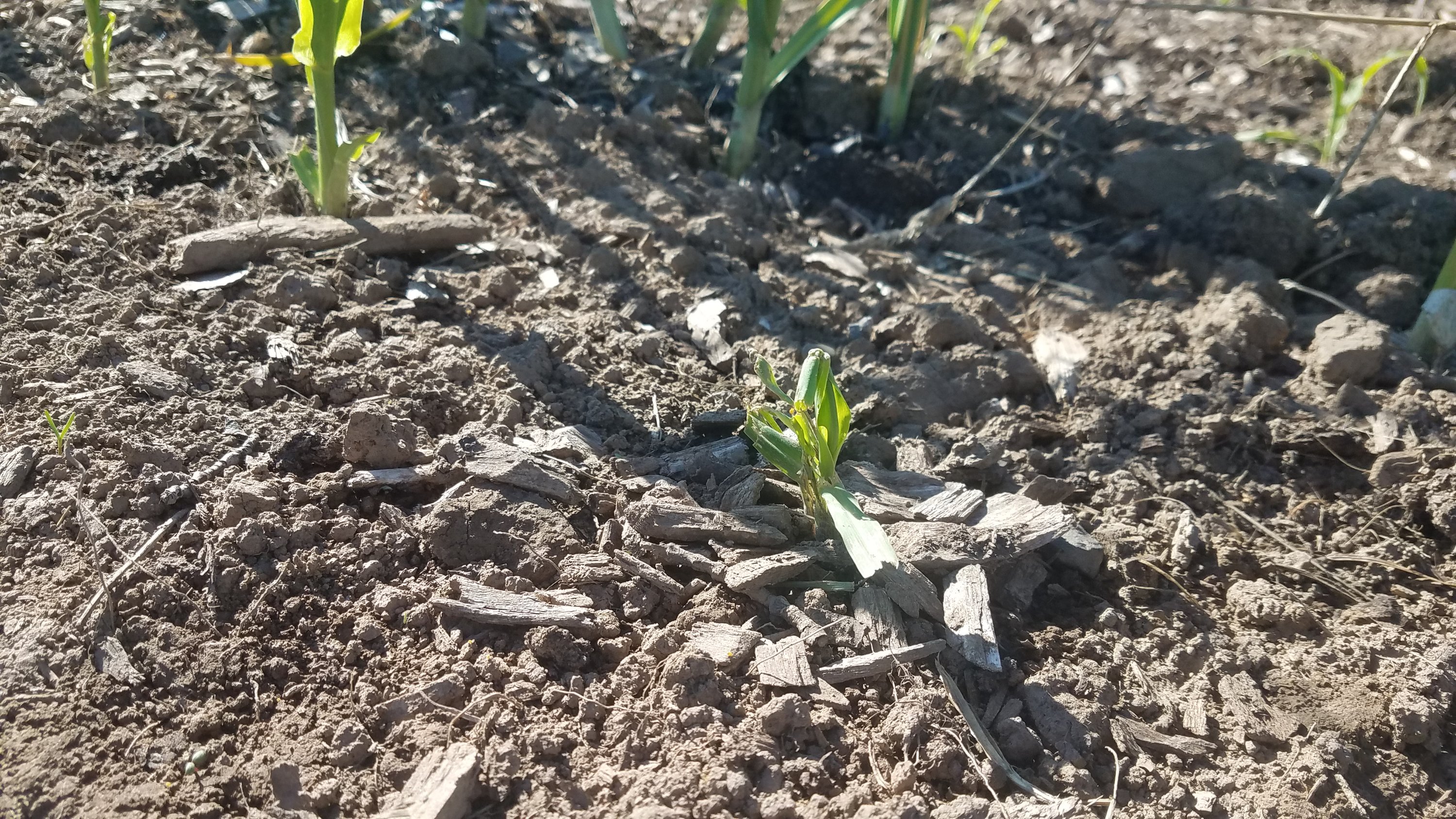
Do you see how the top of this corn seedling got nibbled off?
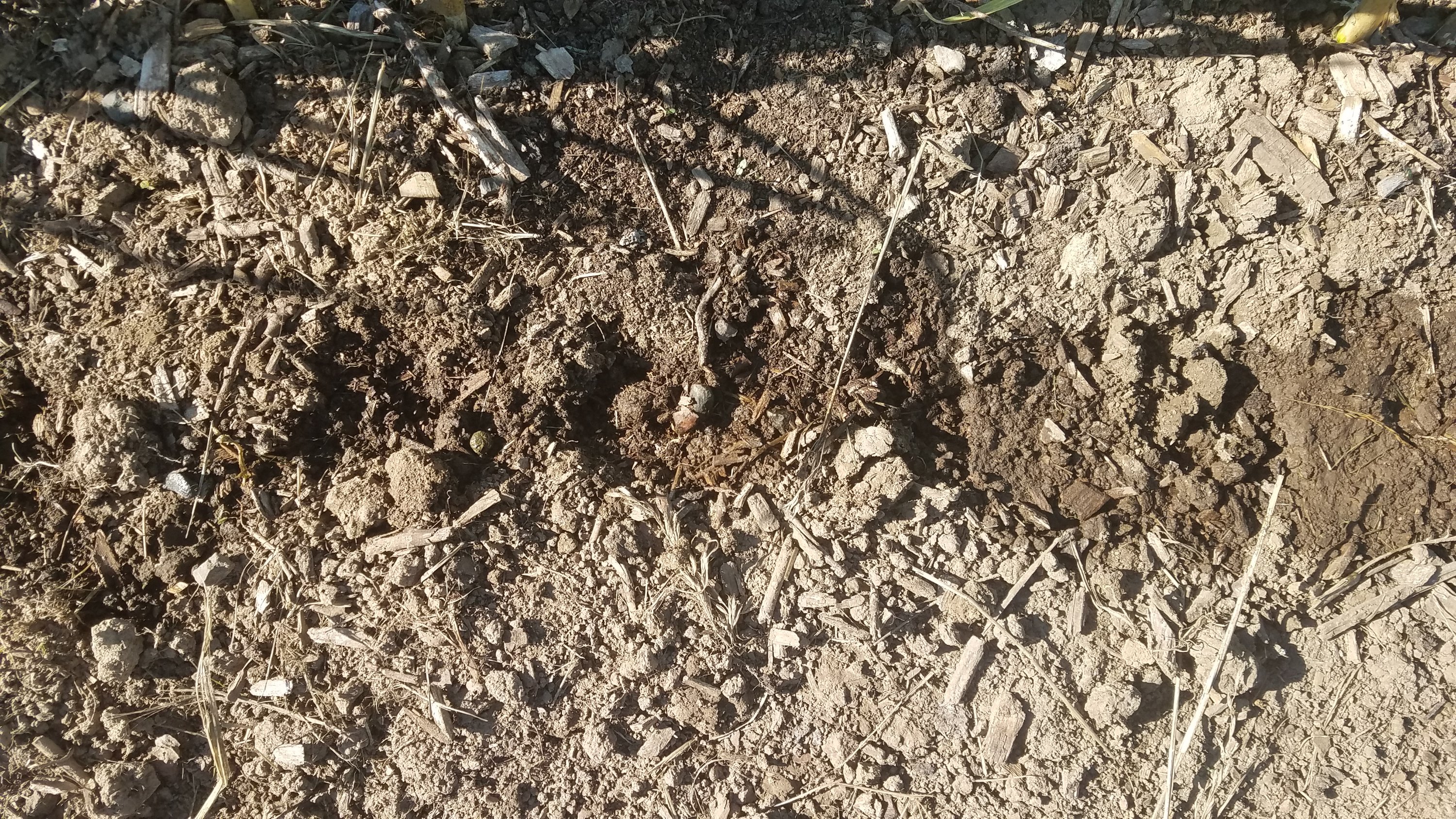
If you sniff real hard you can smell corn growin’ in that soil
I replanted several bare spots in the corn row today, then watered the corn with something called Pee Tea or Poop Smoothie. It’s rabbit poop + pee and hay mixed with water. It smells like the bowels of Hades, especially after sitting in a yard cart for a few days, but it’s supposed to be hecka good for plants.
Hopefully that’ll give the corn a jump start and a strong dose of nutrients. I’m hoping it’ll catch up with the other corn within the next three weeks.
And in other sad seedling news, most of the Boston Pickling Cucumber seeds that sprouted in soil blocks last week were mowed down by slugs last night. I had the soil blocks in shallow plastic containers on the ground. Josh suggested propping them up tonight, so slugs couldn’t get to them. I’m going to try that. It’s not fun to have cute little seedlings eaten. Josh expressed sympathy, and I know he meant it because he knows how it feels to have cute seedlings mowed down, and to lose valuable time. It’s frustrating.
